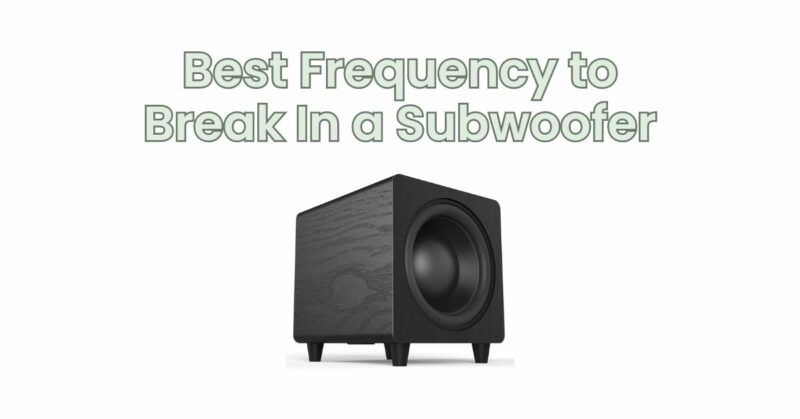Breaking in a subwoofer is an essential step to optimize its performance and ensure long-term durability. During this process, the subwoofer’s components gradually loosen up, allowing for improved bass response and overall sound quality. One factor that often comes into question is the best frequency to use when breaking in a subwoofer. In this article, we will explore the considerations and recommendations for selecting the optimal frequency range for breaking in your subwoofer.
- Follow Manufacturer’s Recommendations: The first step is to consult the manufacturer’s guidelines and recommendations for breaking in your specific subwoofer model. Manufacturers often provide instructions on the recommended frequency range and duration for breaking in their products. These recommendations are based on the design and specifications of the subwoofer and should be followed for best results.
- Bass Frequencies (20-80 Hz): When breaking in a subwoofer, it is generally recommended to use frequencies within the lower bass range, typically between 20 Hz and 80 Hz. This range allows the subwoofer’s components to gradually loosen up without subjecting them to excessive stress. Bass frequencies help exercise the subwoofer’s suspension system, allowing it to become more flexible and responsive over time.
- Moderate Volume Levels: During the break-in process, it is crucial to use moderate volume levels to avoid overloading or damaging the subwoofer. High volume levels can place excessive strain on the subwoofer’s components, potentially leading to distortion or even permanent damage. Keep the volume at a level that allows for audible bass but does not exceed the recommended power handling capacity of the subwoofer.
- Varied Frequency Sweeps: To ensure even break-in across the subwoofer’s entire frequency range, it can be beneficial to use frequency sweeps rather than a fixed frequency. Frequency sweeps start from the lower end of the subwoofer’s range and gradually move up, covering the desired frequency spectrum. This approach helps exercise the subwoofer’s components evenly and ensures that all frequencies are adequately broken in.
- Gradual Increase in Playtime: It is essential to gradually increase the playtime as the subwoofer progresses through the break-in process. Start with shorter sessions of 1-2 hours and gradually extend the playtime over several days or weeks. This allows the subwoofer’s components to adapt gradually to the increased stress and promotes a more controlled break-in process.
- Patience is Key: Remember that breaking in a subwoofer is a gradual process, and it may take time to achieve the desired results. Rushing the break-in process or subjecting the subwoofer to excessive stress can potentially damage the unit. Be patient and allow sufficient time for the subwoofer to properly break in and reach its optimal performance.
Selecting the best frequency range for breaking in a subwoofer involves considering the manufacturer’s recommendations, using bass frequencies within the 20 Hz to 80 Hz range, employing moderate volume levels, incorporating varied frequency sweeps, and gradually increasing playtime. By following these guidelines and being patient throughout the break-in process, you can ensure that your subwoofer reaches its full potential, delivering deep, impactful bass and enhancing your overall audio experience.


